







PROMOTING SUSTAINABLE URBAN ENERGY IN ASIA PACIFIC

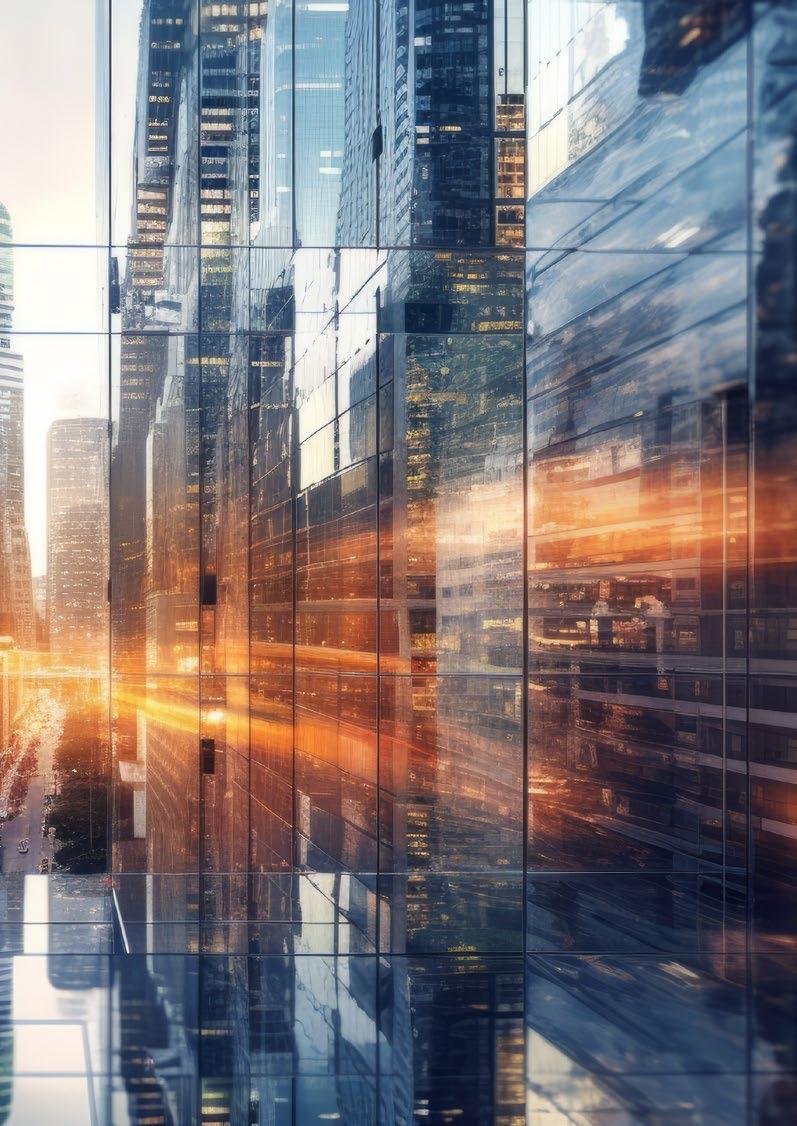

Thailand

25 THE FUTURE OF ENERGY: CA aa S REDEFINES COMPRESSED AIR SYSTEMS IN ASIA PACIFIC by BECIS
29 RESIDUAL HEAT WILL CUT POWER COSTS AND BE USED FOR COOLING IN NEW DELHI by IVL
32 INTERVIEW WITH BRUNO LHOPITEAU, CEO OF BLUEBEE TECHNOLOGIES by APUEA Secretariat
47 EVENT
PRESIDENT
ASIA PACIFIC URBAN ENERGY ASSOCIATION (APUEA)

APUEA,
UPCOMING
ARE WORKING
WE
Climate change keeps breaking world records. At present, Southeast Asia is experiencing a severe heat wave, with temperatures reaching above 48˚C in Myanmar. Schools are closing across the region. Looking back on 2023, the mean temperature across Asia was almost 1˚C above the 1991-2020 reference period—the second highest on record. Japan experienced the hottest summer on record.
The World Meteorological Organization (WMO) recently published State of the Climate in Asia 2023, showing that Asia remained the world’s most disasterhit region from weather, climate, and water-related hazards. In 2023, almost 10 million people were affected by hydrometeorological hazard events across the continent.
On the bright side, global annual renewable capacity growth increased by almost 50% to nearly 510 GW in 2023. Brazil, Europe, and the US hit all-time highs in renewable energy capacity growth. Meanwhile, China commissioned the same amount of solar PV as the rest of the world combined, and its wind growth increased by 66%. Today, non-fossil fuels account for almost 55% of China’s total power generation capacity. For the first time ever, the


renewable energy capacity increase was higher than the energy demand increase – a trend-change towards carbon neutrality. China is serious with its energy transition, no doubt.
We see an increasing interest in large-scale heat pumps and chillers. As the share of renewables in the electricity grid grows, the feasibility of large-scale heat pumps and chillers increases beyond the economy of scale. Utilizing clean energy as a driving force, waste heat from industries, data centres, and wastewater infrastructure as a heat source (ref. heat-pumps) and sustainable heat sink technologies (ref. chillers), in combination with natural refrigerants, result in very attractive technology. In addition, heat pumps and chillers can serve as technologies to provide flexibility in the electricity grid.
At APUEA, we are working hard to prepare for the upcoming Asia Urban Energy Assembly on 4th-5th July at Queen Sirikit National Convention Center in Bangkok, Thailand. For the past two years, we have been teaming up with Informa Markets, hosting the Assembly in conjunction with the ASEAN Sustainable Energy Week 2024. We are also happy to acknowledge the collaboration with our sister-organization, Euroheat & Power, who will attend and contribute to the Assembly with insights from mature urban energy markets across the European continent.
In return, before we kick off the Asia Urban Energy Assembly, APUEA will be present during the Euroheat & Power Congress 2024: Scale up, CO2 down! It is the 42nd congress of Euroheat & Power and is hosted in Rotterdam, Netherlands, from June 3rd to 5th—a month prior to the Asia Urban Energy Assembly. We are looking forward to sharing experiences from across the Asia Pacific region and seeking inspiration for our continuous work supporting and accelerating the development of sustainable urban energy. In this issue of the APUEA Magazine, you can read articles on the topics: Powering progress and innovation in energy, how India can meet its cooling needs, the future of energy in APAC, residual heat recovery in New Delhi, interview with Bruno Lhopiteau, battery energy storage developments in Malaysia, and Interview with KJTS Group. We want to thank Informa Markets, Tabreed, BECIS, IVL, Bluebee Technologies and KJTS Group for contributing to this issue of APUEA Magazine.



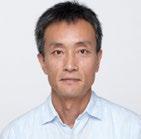





GET IN TOUCH
Asia Pacific Urban Energy Association 2 Silom Edge, 11th Floor, Silom Road, Suriyawong, Bangrak, Bangkok 10500 info@apuea.org
www.apuea.org
Mikael Jakobsson President Peter Lundberg Executive Director Peter Anderberg APUEA Academy Officer Nathinee Roongsitong Publications Manager Muhammad Ali APUEA Australasia Advisor Sanjay Prasad India Representative Teruhisa Oi Policy Advisor Chen Chen China AdvisorFor more information about APUEA and how to become a member, contact info@apuea.org
www.apuea.org
The Asia Pacific Urban Energy Association (APUEA) was launched in 2017 to promote the development of sustainable Urban Energy Systems in the Asia Pacific region. The APUEA platform promotes public and private sector collaboration to develop sustainable urban energy systems that support livable cities across the Asia Pacific region. Our membership and activities serve as an information hub to support city policymakers, program managers, and other stakeholders in the design, development, and implementation of sustainable urban energy systems. Through our activities, including APUEA events, conferences, and continuous outreach to our members, we share international and regional best practices for planning and implementing sustainable urban energy systems—including policies and regulations, business models, and technologies for implementing district heating and cooling, smart grids, energy efficiency improvements, and renewable energy systems.
The APUEA membership provides a unique opportunity to liaise with governmental agencies and important stakeholders and get access to valuable information and intelligence on urban energy developments, business opportunities, trends, and financing in one of the fastest growing energy and infrastructure markets in the world. Membership benefits include a marketing platform, newsletters, APUEA Magazine, Annual Publications, Annual General Meeting including Trade Exhibition and Direct Assistance.

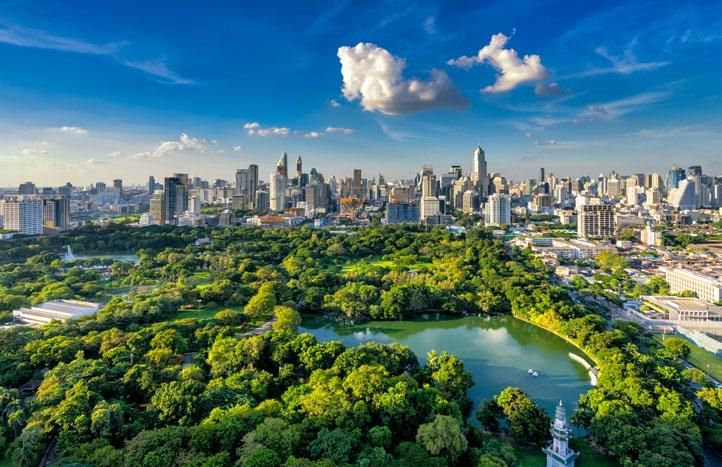
The Asia Pacific Urban Energy Association (APUEA) is a platform to collect and disseminate knowledge, best practices, and tools related to the development of sustainable urban energy systems, and thereby support the development of livable cities in the Asia Pacific region.
APUEA serves a broad range of members including but not limited to utilities, manufacturers, investors, engineering companies, donor agencies and sector associations that are active in the urban energy sector. Members can choose among several membership categories, depending on their sector and level of engagement in APUEA.
PREMIUM MEMBER
Premium membership includes an active role in the governance of the association through the APUEA Executive Committee and during the APUEA Annual General Meeting.
Premium membership also includes special recognition in APUEA publications and marketing channels, and free participation at APUEA events.
CORPORATE MEMBER
Corporate membership includes influence on the association’s activities during the APUEA Annual General Meeting, recognition in APUEA publications and marketing channels, and discounted participation at APUEA events.
AFFILIATE MEMBER (Invitation only)
Individual or agency invited by the Association to participate as an individual member; and entities such as regional NGOs, development agencies, and utility organisations. An Affiliate Member benefits from the Association but does not take an active role in the Association in terms of its governance and operation.
THE ANNUAL MEMBERSHIP FEE DEPENDS ON THE MEMBERSHIP CATEGORY AND ORGANIZATION SIZE:
CORPORATE CATEGORY PREMIUM MEMBER
MEMBER
BENEFITS
Advocacy and Representation
Matchmaking and Referrals
Direct Marketing
Market Intelligence
Knowledge and Best Practices
Regional and International Events
Direct Assistance






Is provided to Government agencies and Public institutions, including the following training module categories:
Introductor y training Concepts and Technologies Advanced training
Is provided in collaboration with educational institutions.


ASEW WILL PROVIDE THE TOP BUSINESS PLATFORM TO SHOWCASE YOUR TECHNOLOGIES, INNOVATIONS, EQUIPMENT, OR SERVICES TO OVER 33,000 DECISIONMAKERS, POLICYMAKERS, PROFESSIONALS, ENTREPRENEURS, INVESTORS, RESEARCHERS, AND ACADEMICS FROM ACROSS THE REGION.
“ENABLING
2024 stands as the premier energy trade exhibition in the ASEAN region, highlighting advancements in energy technology, efficient energy management and cutting-edge energy storage systems. ASEW will provide the top business platform to showcase your technologies, innovations, equipment, or services to over 33,000 decision-makers, policymakers, professionals, entrepreneurs, investors, researchers, and academics from across the region. This event brings together diverse perspectives in a single central location annually. Join 500 major companies and organizations representing 30 countries in delivering the largest showcase of the latest energy technologies in ASEAN.

Secure your spot at this mega-regional energy show, scheduled to take place from July 3 to 5, 2024, at the Queen Sirikit National Convention Center in Bangkok, Thailand.

UNRIVALED EXCELLENCE:
Power up your future at ASEAN's energy technology premier event in the region.
MASSIVE NETWORKING POTENTIAL:
Connect with 33,000 energy trade professionals and ignite your growth potential.
DECISION-MAKERS IN YOUR CORNER:
Face-to-face meetings with key players and influential buyers in the energy sector.
FUEL YOUR BRAND'S SUCCESS:
Grand stage, maximum exposure. Elevate your brand at this pivotal event.
ACCESS CUTTING-EDGE INSIGHTS:
Immerse yourself in an energy knowledge hub where the latest trends and groundbreaking insights await.
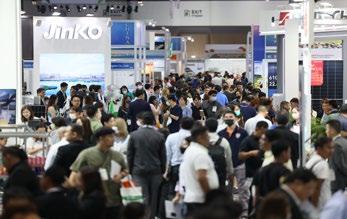
Brings an exciting highlight as we unveil a new addition to our show profile: Energy Storage Asia.
This development emphasizes the escalating significance of energy storage systems within the energy landscape. Serving as a central hub, Energy Storage Asia will showcase cutting-edge technologies from leading global brands, spanning various industries such as power plants, buildings, industrial plants, and electric vehicles.
This presents a distinctive opportunity for industry professionals to engage with top-tier suppliers, serving both the energy sector and the rapidly advancing electric vehicle market. For more
ASEW IS THE PRIME DESTINATION FOR REGIONAL KNOWLEDGE SYNERGY, FOSTERING CONNECTIONS AMONG POLICYMAKERS, PROFESSIONALS, INDUSTRY EXPERTS, AND GLOBAL ENERGY AUTHORITIES.
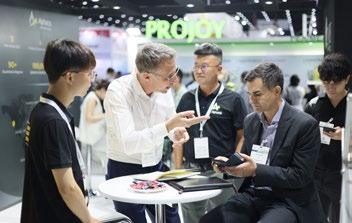
ASEW is the prime destination for regional knowledge synergy, fostering connections among policymakers, professionals, industry experts, and global energy authorities.
It provides a platform for sharing experiences, exchanging knowledge, and cultivating fresh ideas to support the development and expansion of businesses with a commitment to achieving Net Zero Emissions soon.
REA CONFERENCE:
A seminar focusing on alternative energy; a pivotal future trend marked by environmental friendliness and clean energy.
ASIA URBAN ENERGY ASSEMBLY:
An international two-day event, addressing energy solutions for urban communities, encompassing topics such as District Cooling and more.
ASEAN BIO ENERGY & ECONOMY CONFERENCE:
A seminar specifically focused on bioenergy.
THAILAND CONNEXT:
A seminar exploring digital technology in the realm of Energy Efficiency, with a focus on various Data Centers.
ENERGY STORAGE FORUM:
An international academic seminar dedicated to the advancements in energy storage technology.

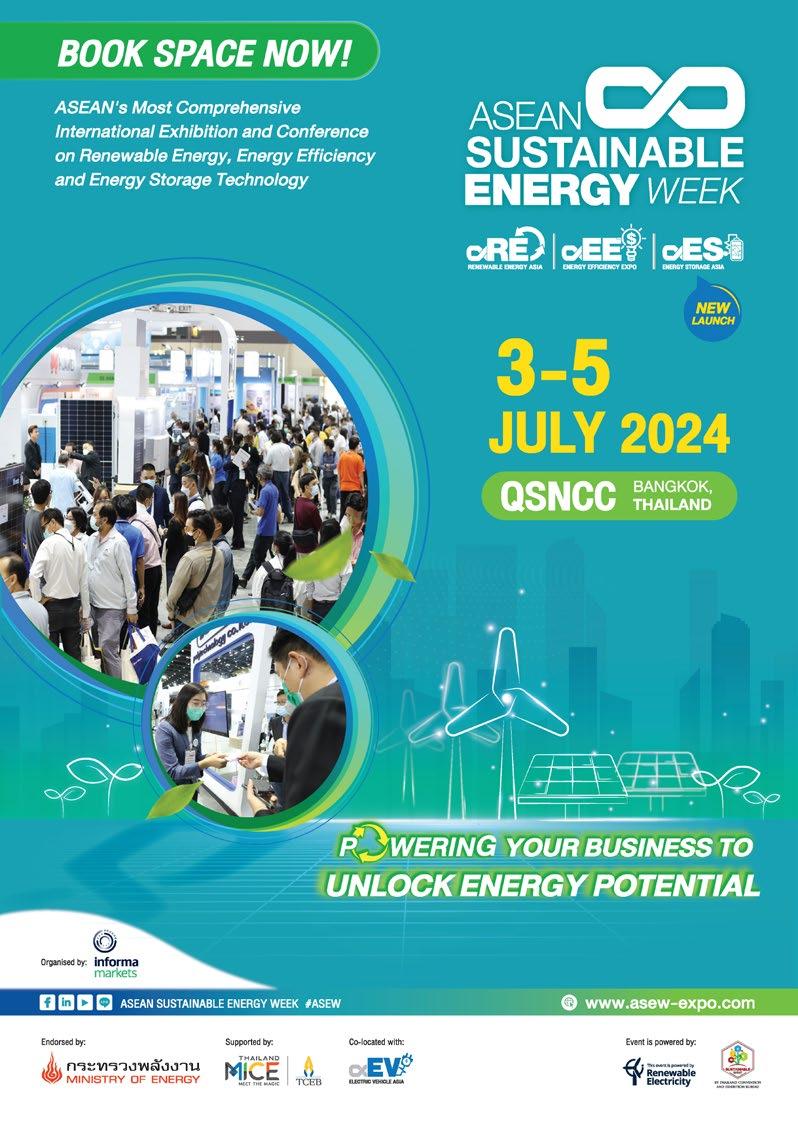

DISTRICT COOLING HAS THE POTENTIAL TO CUT THE ENERGY DEMAND FOR SPACE COOLING, AND THUS ASSOCIATED EMISSIONS EVEN WITHOUT INTEGRATION WITH RE BY 50% TO ~80,000 GWH PER YEAR, GIVEN THE DENSITY OF BUILDINGS AND MORE THAN 50% OF THE BUILDING STOCK IS YET TO BE CONSTRUCTED IN INDIA.

 CBy Sudheer Perla Managing Director, Tabreed Asia & Country Manager, Tabreed India
CBy Sudheer Perla Managing Director, Tabreed Asia & Country Manager, Tabreed India
ooling was a hot button topic at COP28, which was held in Dubai at the tail end of 2023.
For a country like the UAE which has long summers with extreme heat, cooling is vital for survival and central to growth, and technologies such as District Cooling have been at play for long over 20 years.
For a tropical and heat-exposed country such as India – which is the largest global cooling market, adding ~1 m RT of chiller capacity annually – very creative solutions are required to balance the needs and economic aspirations of over 1.4 billion people (with over 0.21 billion multidimensionally poor), alongside meeting its energy emission targets. This was reflected in the divide on the signing of the Global Cooling Pledge, as achieving the succinct targets put down in the pledge to make ‘cooling’ central to meeting climate change goals is a challenge for a country such as India. The Global Cooling Pledge, and related discussions did however bring to the forefront, both the growing requirement for cooling solutions across geographies, as well as the need for a diverse range of approaches to meet these requirements in a sustainable manner.
Technology is of course part of the solution, but holistic technological shifts are often easier to make in countries that are small - both geographically as well as in terms of population size. For India, the solution will have to be as multifaceted as the problem. Not an easy task, but not impossible either. So how can India get there?
India already has a Cooling Action Plan (ICAP), which is a good initiatory step towards planning for cooling solutions in a bespoke fashion. There is initiative taken at various levels of governance with states such as Kerala and Maharashtra developing cooling action plans or integrating cooling into existing climate action plans and cities such as Ahmedabad and Rajkot implementing heat action plans.
Technology is also being integrated in policy action, with not-in-kind technologies and district cooling being recognized in ICAP, and the subsequent launch of District Cooling Guidelines in 2023. Additionally, India has model building energy code, Energy Conservation Building Code (ECBC), which is now undergoing revision to establish minimum energy performance standards for new commercial and residential buildings including zero discharge standards for buildings over a certain size, taking a holistic approach to sustainability beyond emissions reduction.
While the strategy, planning, guidelines and policy may exist, it is the implementation and execution where the gaps lie, given the fragmented and siloed characteristic of the real estate market value chain, wherein much of the adoption is left to the discretion of the state, industry and individual. The ECBC for example is enforced in 23 states, but the larger consuming states of Maharashtra and Gujarat are yet to enforce it.
Stronger adoption of sustainable cooling solutions will require a more local approach, with all actors – municipality, utility, developer, and consumer –involved, both in terms of understanding the need for a long-term vision and clearing any misconceptions around feasibility, access and cost, through innovative business models such as cooling as a service.
Keeping this in mind, Tabreed has partnered with GIZ to catalyze wider adoption of district cooling in India through a three-pronged action plan - facilitation of bilateral exchange between governments to strengthen regulatory frameworks in support of the development of district cooling markets; collaborative project development leveraging GIZ’s proficiency in sustainable development strategies and Tabreed’s

technical expertise of over 25 years; building capacities at national and local level through innovative training workshop formats supplemented by exchange visits.
India has had a long tradition of passive cooling methods that differ depending on the needs of a particular geography. Buildings such as the Taj Mahal have demonstrated the ingenuity of the ‘Lattice method’ of cooling, where screens or “jallis’ allow air to circulate freely through the building while also protecting it from sunlight. Villagers, women especially, in parts of Rajasthan, use the technique of applying white solar reflective paint or in some areas blue paint on their roofs to achieve better cooling in their homes. Most of the traditional ways are also highly economical as they incorporate locally available materials and employ simple techniques.
While the cooling loads can be brought down significantly through passive interventions, there remains a need for active cooling provisions, wherein technology can play a role. Take for instance the demand for electricity towards space cooling at the end of 202021, which was estimated at 160,000 GWh vis-à-vis India’s renewable generation capacity of 147,248 GWh. In a sense, all renewable generation capacity being built in the country is going towards space cooling alone. District Cooling has the potential to cut the energy demand for space cooling, and thus associated emissions even without integration with RE by 50% to ~80,000 GWh per year, given
the density of buildings and more than 50% of the building stock is yet to be constructed in India. If planned well, this will on one hand eliminate investments required for generation, transmission and distribution of energy whilst attracting billions in investments for district cooling and helping more rapidly achieve the country’s net zero targets by 2070.
Unless we take urgent and immediate steps, the RE generation capacity will be trailing far behind space cooling demand in the country. This is the approach in Tata Realty’s Intellion Park in Gurugram, wherein Tabreed is the strategic partner for District Cooling and Cooling as a Service. The development area, designed on the principles of integrated design, complements the Cooling as a Service model operated by Tabreed for Tata Realty’s Intellion Park to serve 700 sqft of area per ton of cooling to achieve an energy performance index of 70-90 kWh/ m2/year, better than most gold/platinum certified green buildings.
STRONGER ADOPTION OF SUSTAINABLE COOLING SOLUTIONS WILL REQUIRE A MORE LOCAL APPROACH, WITH ALL ACTORS – MUNICIPALITY, UTILITY, DEVELOPER, AND CONSUMER –INVOLVED, BOTH IN TERMS OF UNDERSTANDING THE NEED FOR A LONG-TERM VISION AND CLEARING ANY MISCONCEPTIONS AROUND FEASIBILITY, ACCESS AND COST, THROUGH INNOVATIVE BUSINESS MODELS SUCH AS COOLING AS A SERVICE.
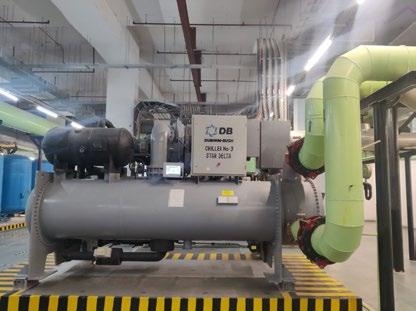

IConsumer awareness is the other vital piece of the puzzle to expedite the process of wider adoption of cooling solutions. Climate change is still a conversation that takes place at very high policy levels, and while awareness on the topic and urgency may exist, it does not often turn into action.
For example, the labeling program introduced through the Energy Conservation (EC) Act 2001, that assigns a star rating to appliances based on their efficiency levels, ensures consumers have the information they need to purchase products that follow higher industry standards. However, actual purchase decisions will always depend on price and brand loyalty.
This leads to a vicious cycle where the cheaper, less energy efficient products are produced in larger quantity. A better understanding of technology such as District Cooling at the consumer level on the green and cost benefits will also help adoption on the developer side, leading to more impactful results. Just as municipalities actively advocate on issues such as waste and health security, energy efficiency must also be championed with the support of utilities. This can create a positive cycle and provide even smaller developers the incentive to build better for a future ready India.
National Central Cooling Company PJSC (DFM: Tabreed)
is a leading international district cooling utility headquartered in the UAE that provides energy-efficient, cost-effective, and environmentally friendly year-round cooling solutions in 6 countries, including Indian markets, through its 89 plants, delivering 1.35 million refrigeration tons (RT) of cooling services to major residential, commercial, government and private developments, eliminating over 1.4 million tons of CO2 emissions annually through its sustainable approach to cooling.
Tabreed India Private Limited is a wholly owned subsidiary of Tabreed Asia Central Cooling Company a 75-25 joint venture between Tabreed UAE and World Bank’s International Finance Corporation (IFC). Tabreed India is actively engaged with several leading real estate developers and institutional investors across the country, for implementing and operating district cooling or stand-alone central cooling plants.
Project design and delivery
Technology and OEM agnostic
Strong R&D and Innovation Focus
Life-cycle cost view
Financing & Capital Structure
$4 BN Consolidated Asset Base
Investment Grade (Fitch-BBB)
Green Bonds Financing Framework
Capital recovery tariffs over 30 years
Operations track record
SLA/KPI based service delivery
Automation, Unmanned, Central teams
25 years, oldest plant in operation
99.8% cumulative average reliability
Centralized Maintenance
In-house with minimal OEM reliance
Reliability Centered Processes
90 plants In 6 countries
475 MN+ Sft of area served
1.3 million RT of delivered cooling capacity
1.5 mn tons Elimination of CO2 emissions in 2022 vs alternative approaches
Primary Shareholders
Government of Abu Dhabi’s investment fund.
1.1 GW Power infrastructure avoided
2.5 billion kWh energy consumption saved in 2022 compared to alternatives
Largest independent power producer (c. 100 GW) and leader in low-carbon services.
Asia Presence through IFC Partnership
Accelerating market adoption of sustainable cooling technologies through match-making and grant funding (in partnership with IFC)
Cooling Services provider to several iconic buildings




THE ELECTRIC & POWER VIETNAM AND HVACR VIETNAM SHOWS PROMISE TO BRING TOGETHER OVER TEN-THOUSAND INTERNATIONAL MANUFACTURERS, TRADERS AND BUYERS IN ONE PLACE DURING THREE DAYS.
M ore than 350+ companies from both the Energy & Power as well as HVAC industry have committed to gather at the international trade shows - Electric & Power Vietnam 2024 and HVACR Vietnam 2024 . These two events are taking place simultaneously this September 4th - 6th, 2024 at Saigon Exhibition and Convention Center (SECC), District 7, Ho Chi Minh City, Vietnam. The shows promise to bring together over ten-thousand international manufacturers, traders and buyers in one place during three days. This is an ideal opportunity for businesses to discover potential suppliers, gain industry insights, solutions and adopt technologies that will enhance their production lines to meet the future demands of sustainable energy in the Asia Pacific region delivering the largest showcase of the latest energy technologies in ASEAN.
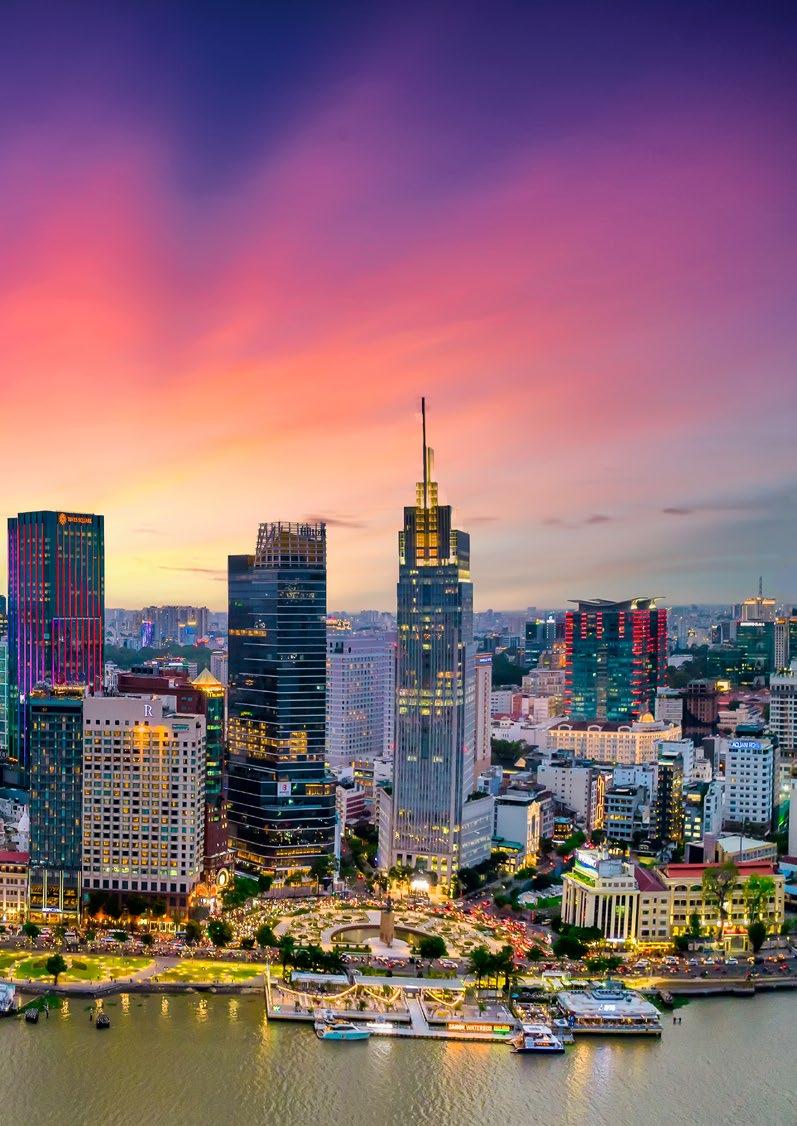


The APAC region is witnessing a large increase in renewable energy project development as a result of the various technologies’ cost competitiveness, as well as government actions to clean up the power generation mix across countries. According to a report by DNV, renewable energy generation in APAC is expected to increase by 47% between 2021 and 2030, and energy storage system (ESS) deployment is being evaluated as a potential solution in this sector. The Asia Pacific energy storage market size is projected to reach USD 75.56 billion by 2032, registering a CAGR of 14.20% during the forecast period (Precedence Research, 2023 - 2032). This prominent niche is rising on account of concerns towards security of supply along with soaring demand for power backup.
In that context, Informa Markets - the global leading trade exhibition organizer headquartered in the UK, is bringing Electric & Power Vietnam 2024 back to Ho Chi Minh City from September 4th to 6th. This international trade expo was initially launched in the Vietnamese power market in 2006 and has successfully grown biannually. The show focuses on equipment and services that cover all aspects of the power industry, including power transmission and distribution, smart grid and generating sets, and electrical accessories.
The 9th edition is estimated to gather 350+ exhibitors from 24+ countries and regions, covering a gross space of up to 9,000 sqm. The event has been confirmed and chosen by industry leaders such as Fuji Electric, Namsung Industries, Legrand, Gacia, Acrel, etc. The events is expected to attract more than 7,000 trade visitors and key buyers in Vietnam and the region.
Especially in this edition, the show is

highlighted by the latest technologies in renewable energy, including wind energy, solar energy, hydrogen, and more, showcased in the co-located exhibition named “Renewable Energy Vietnam 2024 (RE 2024)”. The co-location of these two events will provide a onestop industry platform for all energy enterprises to attend and discover new solutions for their factories, contributing to the development of a renewable energy future in Vietnam that only few exhibitions in Vietnam can offer.
According to Mr. Ts. Lim Sai SoengExecutive Director - QAV Test Technologies (KL) Sdn. Bhd shared: We’ve known about Electric & Power for about 5 or 6 years or even more. This is our first time participating in the EPV show, and it’s really exciting. We’re eager to come from Malaysia and expand our market to Vietnam. We’ve found many visitors at this exhibition who could be our prospects. I plan to set up my company in the next six months, so definitely, in two years’ time, I’ll be here.”
Under the first-ever national development strategy for renewable energy in 2015, Vietnam aims to have over 32% of its generation capacity derived from a combination of solar (19–20 GW), wind (18–19 GW), and biomass by 2030. Besides, after the Government of Vietnam (GoV) approved the “Smart Grid Development Project in Vietnam,” from the 3rd phase after 2022, there will be an increasing need to improve the IT and telecommunications infrastructure to serve the growth of the distribution grid, along with the development of decentralized power plants. In its dedication to boosting renewable energy, especially harnessing the potential of solar and wind energy, the Vietnamese Government has developed various policy mechanisms. At the heart of these
initiatives are Feed-In Rates (FITs), a key innovation to promote consulting and attract investment capital for renewable energy technology.
As part of ASEAN, Energy Storage System (ESS) opportunities in Asia could receive a medium to long-term boost under the ASEAN Plan of Action and Energy Cooperation (APAEC) Phase II (2021–2025). Particularly in Vietnam, to address the redundancy of solar power generation during peak times, Battery Energy Storage Systems (BESS) have been considered for application in renewable energy projects. This is evident in the Prime Minister’s orientation: to install 300MW of BESS systems by 2030. Recently, Vietnam’s first grid-connected battery storage system has been integrated by AMI AC Renewables collaborated with Honeywell in Khanh Hoa, featuring a short-duration BESS with a 15 MW output and 7.5 MWh capacity. These developments shine as a key trend for the future of the power industry in Vietnam and Southeast Asia in general.
Taking place at the same time as Electric & Power Vietnam 2024, HVACR Vietnam 2024 attracts 150+ exhibitors from 20+ countries and regions. Some of them are leading companies in the industry such as Ziehl-Abegg, Frascold, CLK/ Carrier, Johnson Controls, Terra Cooling, Tanda Hong Kong, KCvents and so on. The show is planned to draw 3,000+ trade visitors, covering a gross space of 8,800 sqm.
Under the commitment at COP28 to the “Global Cooling Pledge”, Vietnam is now accelerating its policies and incentives aimed at reducing energy consumption and greenhouse gas emissions.. With 563 industrial parks (IPs) in 61 out of 63 provinces in Vietnam (Vietnamese Real Estate Report, 2022) and 397 IPs out of them have been established,
sustainable HVAC systems for energy efficiency in large-scale construction are more than just a trend, they are a crucial step towards achieving environmental goals and promoting sustainability. These technologies can be found at HVACR Vietnam 2024, with a wide range of exhibit profiles covering air conditioning, heating & ventilation, HVAC controls & thermostats, IoT, energy efficiency, refrigeration, and HVAC technologies for data centers. Particularly this year, the show will focus on cooling, ventilation, and air conditioning technologies to help optimize energy efficiency and savings in buildings and industrial parks.
HVACR Vietnam has been a trustworthy business physical platform for over 15 years. As Mr. Kumud Jhamb, Vice President of the Energy Division, South East Asia, shared in the last edition of HVACR Vietnam in Hanoi last year: “It is a good platform where we can introduce innovative products and solutions to a lot of potential customers and help them save energy in their processes. It is also a good place to meet potential distributors and expand our greener image in the country.”
Not only serving as must-have sales and networking activities, these two events contribute to the business ecosystem by facilitating networking, knowledge sharing, and brand exposure through a series of conferences and round-table meetings.The programmes are collaborated between Informa Markets with prestigious organizations from around the world and in Vietnam, such as Vietnam Energy Partnership Group (VEPG), Asia Pacific Urban Energy Association (APUEA), Vietnam Cloud Computing & Data Center Club, Vietnam Society of Refrigeration & Air-Conditioning Engineers (VISRAE), etc. These collaborations help attendees stay up-to-date on the latest trends and best practices in their industry, making the shows an unmissable occasion for businesses operating in Vietnam and surrounding regions.



COMPRESSED AIR ACCOUNTS FOR APPROXIMATELY 10% OF ELECTRICITY CONSUMPTION IN THE GLOBAL INDUSTRIAL SECTOR, RANKING SECOND ONLY TO COOLING IN THE ASIA PACIFIC REGION.
Compressed air accounts for approximately 10% of electricity consumption in the global industrial sector, ranking second only to cooling in the Asia Pacific region. In industries such as manufacturing, semiconductors, and automotive sectors, compressed air is considered a fundamental commodity. Despite its potential for energy savings, it is often underestimated.
However, it can play a crucial role in a company’s efforts to reduce carbon emissions and shape the future of energy in the Asia Pacific region. Through Compressed Air as a Service (CAaaS), companies can not only save on electricity costs but also gain peace of mind. This service offers more than just energy savings; it provides a sense of security and reliability.
Managing compressed air systems in the Asia Pacific region poses significant challenges for utility managers. With over 80% of lifetime costs attributed to operational expenses, maintaining compressors becomes a costly and time-consuming task.
Compressors require constant attention and maintenance to ensure optimal performance. Without proper care, energy wastage can exceed 50%, resulting in inefficiencies and increased operational costs. Common issues such as leaks, clogged filters, pressure drops, and equipment sizing problems further compound the challenges faced by utility managers. In the event of compressor breakdowns, the only short-term solutions are costly repairs, replacements, or renting additional equipment, putting a strain on maintenance budgets.
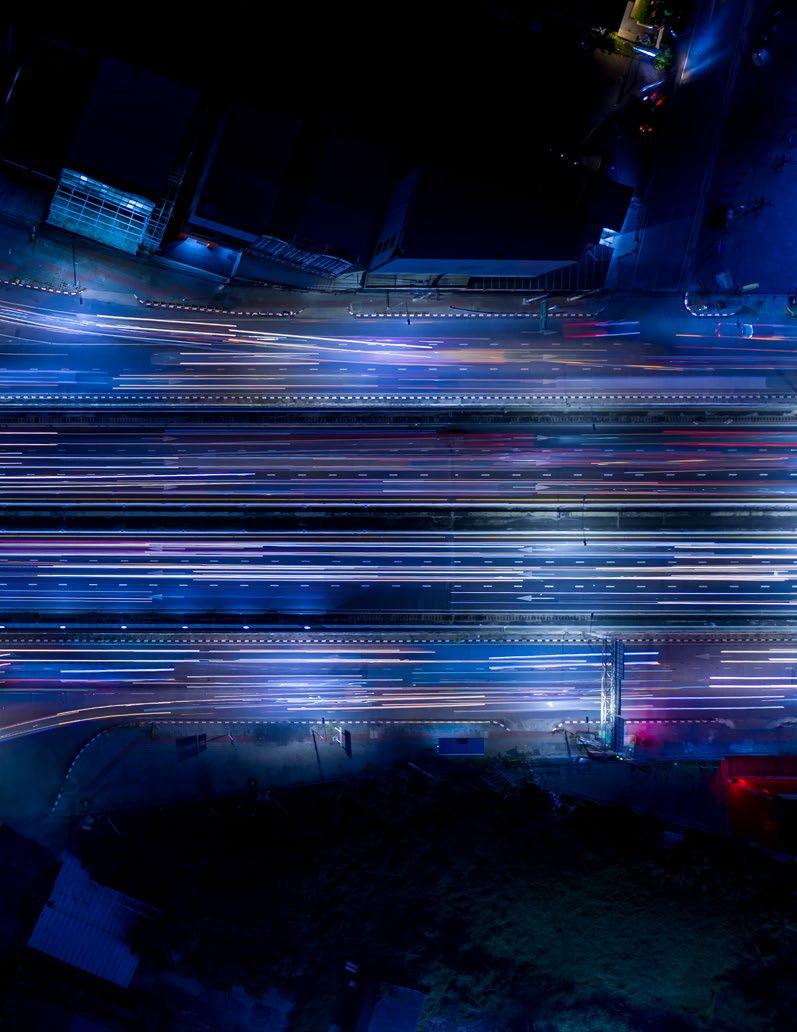
 *Deloitte. Shifting Sands: Are Consumers Still Embracing Sustainability? London, United Kingdom: Deloitte, 2021.
*Deloitte. Shifting Sands: Are Consumers Still Embracing Sustainability? London, United Kingdom: Deloitte, 2021.
WITH CAaaS :
Compressed air is quickly becoming the preferred choice for businesses seeking to enhance their energy management through Compressed Air as a Service (CAaaS). This innovative subscriptionbased model is revolutionizing the way companies manage their compressed air systems. Service providers handle everything from design and installation to operation and maintenance, with a focus on energy efficiency, cost-effectiveness, and reliability. Clients receive full maintenance services at no additional cost, ensuring their systems operate smoothly and efficiently.
One of the main benefits of CAaaS is its transparent billing system. Clients are only billed for the actual amount of compressed air they use each month, eliminating unexpected maintenance expenses and preventing electricity bill spikes. This predictable cost structure enables businesses to budget effectively and avoid financial surprises. By entrusting the management of their compressed air systems to CAaaS providers, clients can concentrate on their core activities without the added burden of system maintenance. This not only reduces risks but also enhances overall productivity.
As part of our Energy as a Service (EaaS) offering, BECIS offers comprehensive services that encompass engineering design, installation, and system integration. By utilizing energy-efficient equipment and optimizing system performance, CAaaS helps decrease primary energy consumption and carbon emissions, ultimately reducing overall energy expenses for businesses.
CAaaS SUCCESS:
Transitioning to Compressed Air as a Service (CAaaS) requires a structured approach:
1. System Assessment: We start by evaluating your current compressed air systems to identify energy inefficiencies and areas of high operational costs.
2. Tailored Solutions: Our team designs customized CAaaS systems to maximize energy efficiency and reduce operational expenses.
3. Installation & Integration: We smoothly install new equipment and integrate it into your existing infrastructure, ensuring minimal disruption to your operations.
4. Continuous Monitoring & Optimization: Proactive monitoring and regular maintenance are crucial for maintaining energy efficiency and cost savings over time.
At BECIS, we begin the process with a comprehensive assessment of your compressed air load and current plant efficiency. Based on your specific needs, we create a custom design using cutting-edge equipment. As part of our CAaaS offering, we handle the installation and integration of new equipment at no extra cost, taking full responsibility for its operation and maintenance with a performance guarantee. With BECIS as your partner, your journey to CAaaS success is smooth and stress-free.
Cooling towers are easily recognizable symbols of waste heat potential, commonly found in compressed air plants throughout the region. With waste heat rejection temperatures reaching up to 90°C in water-cooled air compressors, this resource holds significant value. Instead of wasting it at low temperatures, innovative solutions can harness this energy for increased efficiency.
By redirecting waste heat into heat pumps, it can be raised to higher temperature levels, providing hot water for industrial processes or powering
absorption chillers to produce chilled water. This approach not only reduces energy consumption but also cuts costs associated with cooling towers and their maintenance.
Furthermore, large compressor farms have the potential to supply energy at temperatures up to 90°C, perfect for preheating feed water for boilers or operating absorption chillers and heat pumps to meet cooling and heating needs.
With the ability to recover up to 94% of the energy supplied to a compressor, this process significantly improves overall plant efficiency, effectively turning waste into a valuable resource.
Compressed Air as a Service (CAaaS) embodies the fundamental principles of Energy as a Service, offering clients peace of mind and a clear path to sustainability.
By upgrading to cutting-edge equipment and embracing efficient design principles, companies can meet their climate protection and financial goals without the need for upfront capital investment.
This innovative approach eliminates the cumbersome maintenance associated with traditional compressed air systems, allowing businesses to concentrate on their core operations. Through a pay-forusage model, clients can benefit from predictable costs while also reducing their environmental impact.
In essence, CAaaS represents a significant step towards a more environmentally friendly future, where sustainability and financial feasibility intersect to bring about meaningful change in the energy landscape of the Asia Pacific region.
OF ENERGY AS A SERVICE, OFFERING CLIENTS PEACE OF MIND AND A CLEAR PATH TO SUSTAINABILITY.
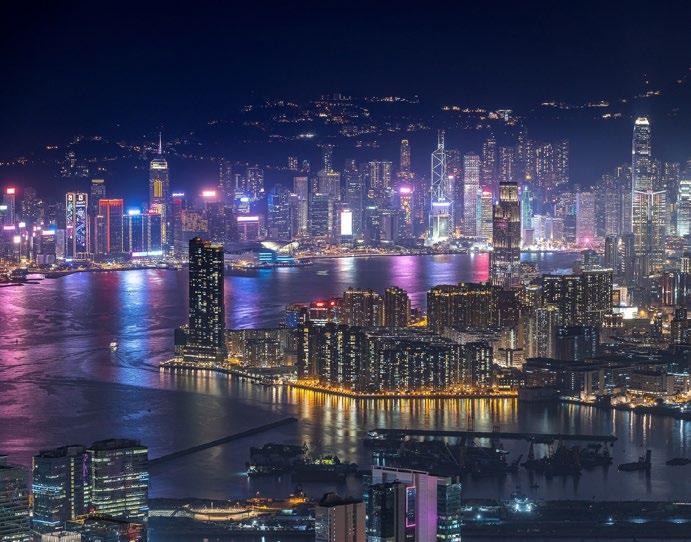

BECIS is a leading Energy as a Service (EaaS) provider to high-quality commercial and industrial customers.
With the EaaS model, BECIS develops, constructs, operates, and owns distributed energy solutions. This reduces the risk and complexity for our customers whilst achieving their key objectives of sustainability, increased cost efficiency, and resilience of their energy infrastructure, all with no requirement for capital investment.
· Investment
BECIS finances projects to minimize or eliminate customer CAPEX spend.
· Design & Engineering
Our solutions are engineered to high safety and reliability standards.
· Sustainability & Decarbonisation
BECIS continues to expand its solutions offerings which enable our customers to achieve ambitious targets.
· Construction
We safely manage and deliver projects – reducing complexity and risk for our customers.
· Asset Performance
Our assets are monitored and maintained over their life to ensure reliable delivery of energy & service.

HIGH TEMPERATURE RESIDUAL HEAT, AS PER THE EXAMPLE IN NEW DEHLI AND FROM THE CEMENT INDUSTRY, IS A LOW HANGING FRUIT BUT THERE ARE ALSO OTHER. URBAN PROCESSES GENERATE HEAT 24/7 BECAUSE PEOPLE LIVE AND WORK IN CITIES.
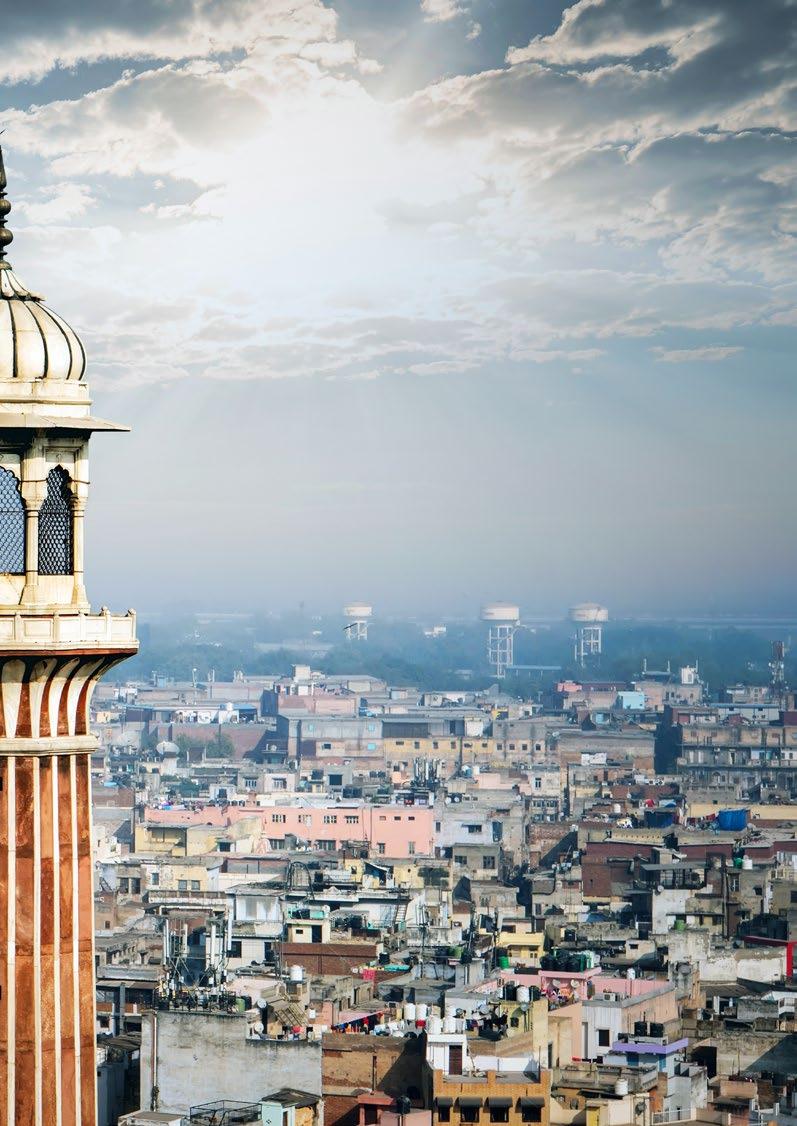
With an increasing insight that the 1.5 ˚C degree goal is going to be hard to obtain, there is a growing awareness that we cannot remain with our current habits because they lead to climate change. In Europe, the Energy Efficiency Directive was updated in 2023 and for the first time, residual heat from different processes (industrial and urban), was put at pair with renewables. Studies in Europe have shown that approximately 35% of the heating demand in buildings could be met by residual heat. To date, only a small fraction of the heat is, however, recovered (Lygnerud et al., 2022).
India is a country with a large population. With higher living standards the demand for cooling is booming. In such a context, it is relevant to ensure that cooling can be provided in a way that is sustainable long-term and that does not burden the electricity grid. One way to do so is to resort to residual heat to generate cooling. In Sweden, the world champion of residual heat recovery, approximately 9% of the heat supplied to district heating networks comes from industrial, residual heat (Lygnerud & Werner 2018).
There, the heat is used to provide heat and hot water to buildings. In Sweden, industrial residual heat recovery has been ongoing since 1974 but the potential to increase the volumes of recovered heat are substantial.

PREVIOUS STUDIES HAVE SHOWN THAT THE CHALLENGE TO SUCCEED WITH RESIDUAL HEAT RECOVERY, REGARDLESS OF ITS TEMPERATURE, IS NOT TECHNOLOGY. RATHER, IT IS TO GET PEOPLE TO START WORKING WITH EACH OTHER IN NEW WAYS, CONNECTING THEIR PROCESSES TO BUILD AN ENERGY SYSTEM THAT IS ECONOMICALLY, ENVIRONMENTALLY AND SOCIALLY SUSTAINABLE (LYGNERUD ET AL. 2022).

heat can be used to provide cooling but also to save power cost. The Economic Times Industry reported, in 2021, that cement companies in India are to invest up to Rs 1,700 crore in waste heat recovery system to save power cost (Economic Times, 2021). Another, important sector, with large residual waste heat volumes is the healthcare sector.
Hospitals generate large amounts of toxic medical waste that must be incinerated according to regulatory standards. In a plant in New Delhi, 20 tonnes of medical waste is being combusted every day. For a full year that makes 7 300 tonnes of waste. The waste is combusted at 1000˚C, to be compliant to current regulation, with a residual of ashes and heat. The heat is too warm to release directly into the ambient air, so this has to be scrubbed to cool down, allowing it to be released into the ambient air at 100˚C. In a project, co-financed between the Swedish Innovation Agency (Vinnova) and the Indian Department of Science and Technology a test bed for investigating the possibility to recover the residual heat will be installed. The residual heat will be reused internally, to save power, in the combustion plant. Additionally, an analysis of whether it is possible to cool adjacent, large freezer rooms for vegetables with remaining volumes of residual heat will be investigated. If successful, it is foreseen to scale the solution up across the country and to feed information into upcoming legislation, updated every 6 years, in medical waste treatment.


High temperature residual heat, as per the example in New Dehli and



from the cement industry, is a low hanging fruit but there are also other. Urban processes generate heat 24/7 because people live and work in cities. Heat is generated in infrastructures like the sewage system, transportation grids (metros) and IT (datacenters) but also from buildings themselves. Additionally, there is energy in the ambient air as well as in lakes, rivers and the sea. In smart cities, this kind of heat supply should be harvested. Just as there is a demand of locally produced food, there is a need for locally generated energy. Local energy supply results in local jobs and in local stakeholder engagement. Previous studies have shown that the challenge to succeed with residual heat recovery, regardless of its temperature, is not technology. Rather, it is to get people to start working with each other in new ways, connecting their processes to build an energy system that is economically, environmentally and socially sustainable (Lygnerud et al. 2022). To work in new ways, awareness must exist about new possibilities. To raise awareness is the main goal of the test bed in New Delhi.


Partners in the project are, from the Swedish side the company Nixity, with a proven residual heat recovery track record, the European center of excellence in district energy IVL and the district energy knowledge transferring company Heatnet Global. From the Indian side, medical waste management company Biotic is the partner.



Established in 1966, the Institute has focused on sustainability for over fifty years. A non-for profit organization working on a variety of topics, including district energy. Located in Sweden.

Multisector project management services focusing on district energy, thermal power/ energy production, integration and digitalization. Nxity also provide engineering solutions for energy efficiency. Operating in Sweden, India, China and Thailand.






With 15 years of expertise in Biomedical Waste Management, Biotic Group of Companies service more than 10,000 customers and 50,000 hospital beds, each day. Located in India.Operating in Sweden, India, China and Thailand.

Heatnet Global facilitates the decarbonisation of heating and cooling in practice. Through its extensive network of well-connected partners in targeted markets, Heatnet Global offers a range of mapping, match-making and capacity building services to drive the delivery of low-carbon heating and cooling.

Heat Academy is an international training and awareness building activity within Heatnet Global. Heat Academy supports the development of low carbon heating and cooling by delivering vocational and professional training in partnership with local colleges, universities, and other industry stakeholders. Heat Academy is also involved in building awareness of low carbon heating and cooling, as well as attracting young people to the sector.














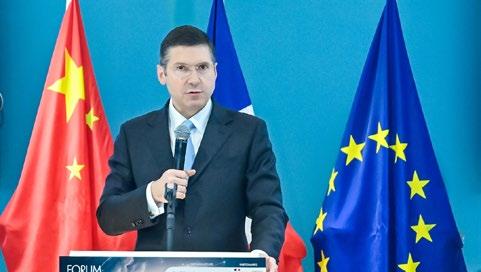
Can you make an introduction to yourself and Bluebee Technologies?
Bluebee Technologies was founded in 2013 as a spin-off of the Siveco China R&D center. The company was created by veterans of the Computerized Maintenance Management System (CMMS) market, who had observed major design and implementation gaps between the needs of clients in Asia and what vendors offered. Still in 2024, most utility projects, despite massive corporate IT programs and investments in new technologies such as Digital Twins, start their operation without proper digital support for managing assets and maintenance.


Can you describe the business scope including main activities and goals?
Bluebee Technologies designs innovative yet practical solutions for Operation & Maintenance (O&M), known as bluebee®. bluebee® supports Industrial Risks and Assets Management by enabling industrial decisions based on true data from mobile workers, connected objects and external systems. We primarily target utilities and infrastructures, ideally during the construction phase to ensure best O&M practices from day one.
WE OBSERVE TYPICAL ROI FROM OUR PROJECTS WITHIN ONE YEAR (IN FACT WE DESIGN OUR PROJECTS WITH THIS TARGET IN MIND), SOMETIMES IN A MATTER OF WEEKS



Often underestimated, maintenance has a dynamic effect on the entire business, to ensure stable and safe operation, profitability, environmental compliance. Experience in Asia has shown that indirect costs and losses are over ten times the direct O&M costs. As facilities grow more sophisticated and automated, the importance of maintenance increases. Mounting regulatory pressure also puts additional emphasis on O&M.

Can you explain the importance of Smart O&M, and what benefits it brings?
Years after start-up, they still rely on a mix of poorly implemented corporate systems, Excel sheets and… a lot of paper. This leads to losses throughout the lifecycle of the plant and a general lack of traceability, a problem in regulated industries facing increasing government scrutiny. Bluebee Technologies aims to change that. As for me, I have been in this business for over 25 years in Asia.

What are the geographic focus areas of Bluebee Technologies?





I often say we focus on “Asia and from Asia”. This is only natural as our teams are located in Singapore, Bangkok, Hongkong and Shanghai. Thanks to our involvement in the Chinese infrastructure boom of the past two decades, our reputation has grown and today we work with infrastructure owners, operators, and Asia-based builders all over the world. This has brought us as far as Algeria or Egypt for example. We currently see lots of opportunities in the Middle East.
What is the potential for improving O&M in Asia?
The ROI potential is enormous. O&M is at the core of managing infrastructure.
Smart O&M is a term that we came up with. The traditional market terminology is CMMS or EAM, which are systems designed for the old-style “PC + paper” model. Most CMMS/EAM users today still work like in the 1990s. Smart O&M covers a scope wider than just maintenance, in line with current market needs, encompassing regulatory compliance, risk management, inspections, etc. And it is designed for the modern world, where mobility, IoT, BIM etc. are prevalent.
Essentially, our solution bluebee® is designed to facilitate the implementation of O&M best practices under the ISO 55000 Asset Management framework and to demonstrate compliance to the various stakeholders (owners, clients, regulators), closing the loop between strategy and execution. The solution is very user-oriented, putting technicians and


managers at the center, using the system on mobile phones and large touchscreens for decision support.
Through audits performed before and after projects, we observe typical ROI from our projects within one year (in fact we design our projects with this target in mind), sometimes in a matter of weeks, for example when better decision support helped pinpoint and solve hidden construction problems that had huge impact on operations.
Which market has the largest potential for you?

Our main target markets are energy and environmental infrastructures (water and waste), which face increasing technical complexity and strong regulatory pressure. We also work with large properties (high buildings, shopping malls etc.), transportation projects (metro, airports) and industrial clients.
Our customers include Keppel Infrastructures, Suez, Taiyo Nippon Sanso, Veolia, Zhongshan Water, SP Group, Singapore PUB, Hanwha Engineering, Hyundai Engineering & Construction, CNEEC, Dongfang Electric, Masdar, ABB, the Hongkong Environment Protection Department, etc.
Can you go through the various steps of your projects?
In the case of a greenfield project, we will involve as early as possible, sometimes during the design or tendering phase (for an EPC) and follow all steps of the construction to help with handover from construction to maintenance. Our systems will serve as data repository, incorporating the BIM model if there is one, and O&M teams will start using it during commissioning.
In existing facilities, we often start with an audit, to understand the priorities and design our project accordingly. In the long term, we continue to work alongside our clients for continuous improvement, with regular audits and coaching services.
What is the potential for AI and Machine Learning for O&M?
It may come as a surprise, but AI and its applications to predictive maintenance is nothing new. Recent technological
advancements make it more promising, but the same practical challenges remain. It is certainly not magic. We have had Predictive Maintenance and Machine Learning modules in bluebee® for many years already. They can be used to help with analysis, optimize work routines and organizations: for example municipal water company Zhongshan Water used AI to reallocate its geographical dispersed teams across the city.
We have just released an updated version of our predictive maintenance tool and a new AI-powered help Chatbot.
From your perspective, are there any barriers today in implementing Smart O&M solutions in Asia, and if so how can they be removed?
We see mostly corporate hurdles: IT departments in large utilities are used to the old CMMS/EAM model, with established IT vendors, and are naturally reluctant to adopt an innovative and more industrial-driven approach. To overcome this challenge, we recommend identifying a pilot site, ideally a new-built plant, so as not to impact the existing supplier and to reduce corporate friction.
They are financial barriers as well. It is easier to fund the Smart O&M initiative as part of a large CAPEX project, rather than from the O&M budget. In utilities, regulatory demand for better traceability in HSE and in some countries mandatory BIM usage for O&M, can help overcome these corporate obstacles. Generally, Asia and developing economies all over the world present great potential as they are building new infrastructures and workers are very open to innovative technology.
GENERALLY, ASIA AND DEVELOPING ECONOMIES ALL OVER THE WORLD PRESENT GREAT POTENTIAL AS THEY ARE BUILDING NEW INFRASTRUCTURES AND WORKERS ARE VERY OPEN TO INNOVATIVE TECHNOLOGY.

French-invested Bluebee Technologies was founded in 2013. It is headquartered in Hong Kong, with R&D center in Shanghai, offices in Singapore and Bangkok, value-added partners all over Asia. www.bluebeecloud.com

C o n t r o l y o u r i n d u s t r i a l r i s k s w i t h Sm a rt O &M solutions!
Bluebee Technologies design innovative yet p r a c t i c a l D i g i t a l T w i n f o r O & M s o l u t i o n s known as bluebee®.
b l
E n v i r o n m e n t a l , S o c i a l a n
( E S G ) , O p e
e n a b lin g in d u
d a t a f r o m m o
objects and external systems.
O v e r 1 , 0 0 0 c l i e n t s i t e s u s e b l u e b e e ® i n
E n v i r o n m e n t , E n e r g y , M a n u f a c t u r i n g ,
I n f r a s t r u c t u r e s a n d F a c i l i t i e s . M a j o r c l i e n t s i n

with us

A s i a i n c l u d e Arkema, Center One Shopping Plaza, Chonburi Clean Energy, Daramic, Essilor, Hyundai Engineering, Keppel Infrastructures, PUB Singapore, Ranhill Power, Sanso, SP Group, Suez, Taiyo Nippon, Veolia, etc F r e n c h
w
learn

Bluebee
ecosystem


ENERTEC ASIA 2024 PROVIDES AN UNPARALLELED PLATFORM FOR NETWORKING AND COLLABORATION AMONG BESS INDUSTRY STAKEHOLDERS, INCLUDING MANUFACTURERS, DEVELOPERS, INVESTORS, AND POLICYMAKERS. PARTICIPANTS CAN FORGE STRATEGIC PARTNERSHIPS, EXPLORE EMERGING BUSINESS OPPORTUNITIES, AND CULTIVATE COLLABORATIONS AIMED AT DRIVING INNOVATION AND GROWTH WITHIN THE BESS SECTOR.
The energy sector is experiencing a radical transformation as we move towards a cleaner, more sustainable future. Renewable energy sources like solar and wind are becoming increasingly vital.
However, these sources have an inherent challenge: intermittency. The sun doesn’t always shine, and the wind doesn’t always blow. This means the amount of electricity generated can fluctuate significantly, creating a challenge for the power grid.
To address this challenge, Energy Storage Systems (ESS) have become indispensable for managing today’s electricity grid. Among various technologies, Battery Energy Storage Systems (BESS) are gaining popularity due to their high efficiency, low maintenance requirements, and scalability.
BESS functions as a giant rechargeable battery, storing surplus electricity generated during peak production times and releasing it back to the grid when demand is high or renewable generation is low. This not only helps to stabilise the grid but also allows for more efficient utilisation of renewable energy sources.


Supported By

In the manufacturing sector, where energy demands are substantial, BESS offers significant advantages. By storing excess energy during off-peak hours, manufacturers can draw from their reserves during peak periods, reducing their reliance on the grid and lowering peak demand charges. Additionally, BESS enable participation in demand response programs, where facilities are compensated for reducing energy consumption during peak times. This strategic energy management translates to substantial cost savings.
Furthermore, BESS enhance energy security for manufacturers. BESS systems can provide backup power, ensuring critical operations continue uninterrupted during grid disruptions. This not only minimises financial losses but also safeguards product quality and maintains production schedules. By integrating BESS with renewable energy sources, facilities can reduce their dependence on fossil fuels and their carbon footprint.
While BESS represents a significant leap towards a sustainable future, companies like global power management leader EATON are taking innovation a step further. Their xStorage solutions empower organisations to actively participate in this transformed energy landscape. These containerized BESS systems seamlessly integrate with existing infrastructure, offering a multitude of benefits. Organisations can leverage xStorage to store excess renewable energy generated on-site, using it to power their buildings and electric vehicles. This not only reduces reliance on traditional energy sources but also allows for participation in demand response programs. By selling energy back to the grid during peak periods, organisations can generate additional revenue. Furthermore, xStorage enhances energy security for manufacturers by providing backup power during grid disruptions.
Built upon EATON’s proven expertise in power management technologies, xStorage BESS solutions offer unparalleled resilience and industryleading power quality. This empowers organisations to confidently navigate the
complexities of the energy transition and embrace a sustainable future.
Malaysia has set an ambitious target of 70% renewable energy by 2050, and the adoption of BESS are critical to achieving this goal. With a surge in demand for Renewable Energy (RE), Energy Efficiency (EE), and Electric Vehicles (EVs), BESS ensures a stable electricity supply, supporting sustainable energy development. Beyond its impact on the energy sector, BESS enhances system efficiency in various industries such as HVACR (Heating, Ventilation, Air Conditioning, and Refrigeration), particularly benefiting energy-intensive sectors like data centres.
The Malaysia Renewable Energy Roadmap (MyRER) outlines targets and investments earmarked for BESS projects. Additionally, the recent partnership between Citaglobal and Genetec to manufacture BESS in Malaysia demonstrates the country’s commitment to sustainability. This collaboration not only improves grid performance but also attracts investments, boosting economic growth. The launch of Malaysia’s 400 MWh BESS pilot project by Tenaga Nasional Bhd marks a significant step towards addressing renewable energy intermittency issues. This initiative showcases the country’s dedication to advancing its energy transition and becoming a global model for sustainable development.
Innovation is further propelling Malaysia’s BESS market. The development of data centres and artificial intelligence (AI) is a key driver. These technologies require reliable and efficient power sources, creating a significant demand for stable energy solutions.
This focus on innovation is exemplified by the recent MOU between JLand Group and ALPS to establish BioValley within the high-tech Ibrahim Technopolis (IBTEC). IBTEC, a 7,290-acre “circular city” north of Iskandar Malaysia, is the country’s first certified Low Carbon Industrial City. It serves as a collaborative hub for cuttingedge industries like data centres, smart logistics, medical technology, robotics, and AI. This focus on sustainability aligns
perfectly with the growing demand for BESS within data centres.
ENERtec Asia 2024 Powers Southeast Asia’s Battery Revolution
Amidst these developments, ENERtec Asia 2024, the region’s leading energy event, emerges as a pivotal platform for innovation and collaboration. ENERtec Asia 2024 is amplifying its focus on BESS with the introduction of a new segment – BATTERY & EV Tech (Energy Storage & EV Technology and Solutions). Supported by The Battery Show, this strategic addition underscores ENERtec Asia’s commitment to driving innovation in the Energy Transition market and facilitating collaboration and investment in BESS solutions.
Organised by Informa Markets, cohosted by The Electrical and Electronics Association of Malaysia (TEEAM), and in partnership with the Energy Industries Council (EIC), ENERtec Asia 2024 is scheduled from 26 – 28 June 2024 at the Kuala Lumpur Convention Centre (KLCC) in Malaysia. With over 400 exhibitors, 5 international pavilions, and 10,000+ visitors, the event facilitates strategic partnerships and explores emerging opportunities in the BESS sector.
ENERtec Asia 2024 provides an unparalleled platform for networking and collaboration among BESS industry stakeholders, including manufacturers, developers, investors, and policymakers. Participants can forge strategic partnerships, explore emerging business opportunities, and cultivate collaborations aimed at driving innovation and growth within the BESS sector.
The integration of BESS into the energy landscape marks a significant leap towards achieving sustainability and grid reliability. As we continue to navigate the complexities of transitioning towards renewable energy, BESS emerges as a linchpin technology facilitating this transition.
Join ENERtec Asia 2024 to discover cutting-edge BESS solutions, forge strategic partnerships, and explore emerging opportunities in this sector. Together, let’s power the future with Battery Energy Storage Systems. Visit www.enertecasia.com for more information.
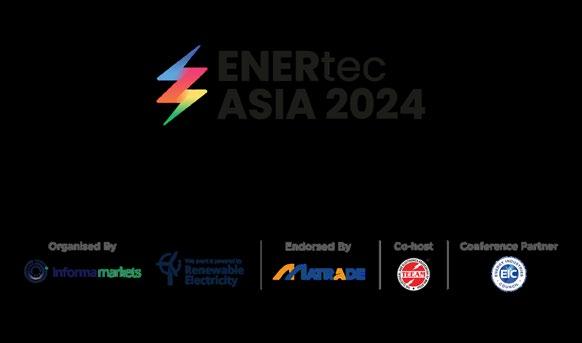

P R E R E G I S T R A T I O N I S N O W O P E N !
Embark on a future of sustainable energy and
Embark on a future of sustainable energy and technology at ENERtec Asia. Unite with industry technology at ENERtec Asia. Unite with industry players, pioneers & visionaries as we empower a players, pioneers & visionaries as we empower a sustainable tomorrow! sustainable tomorrow!
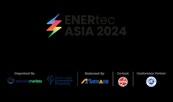
Date : Venue :
c Asia 2024
power Energy Transition echnology
Kuala Lumpur Convention Centre (KLCC)
26th - 28th June 2024


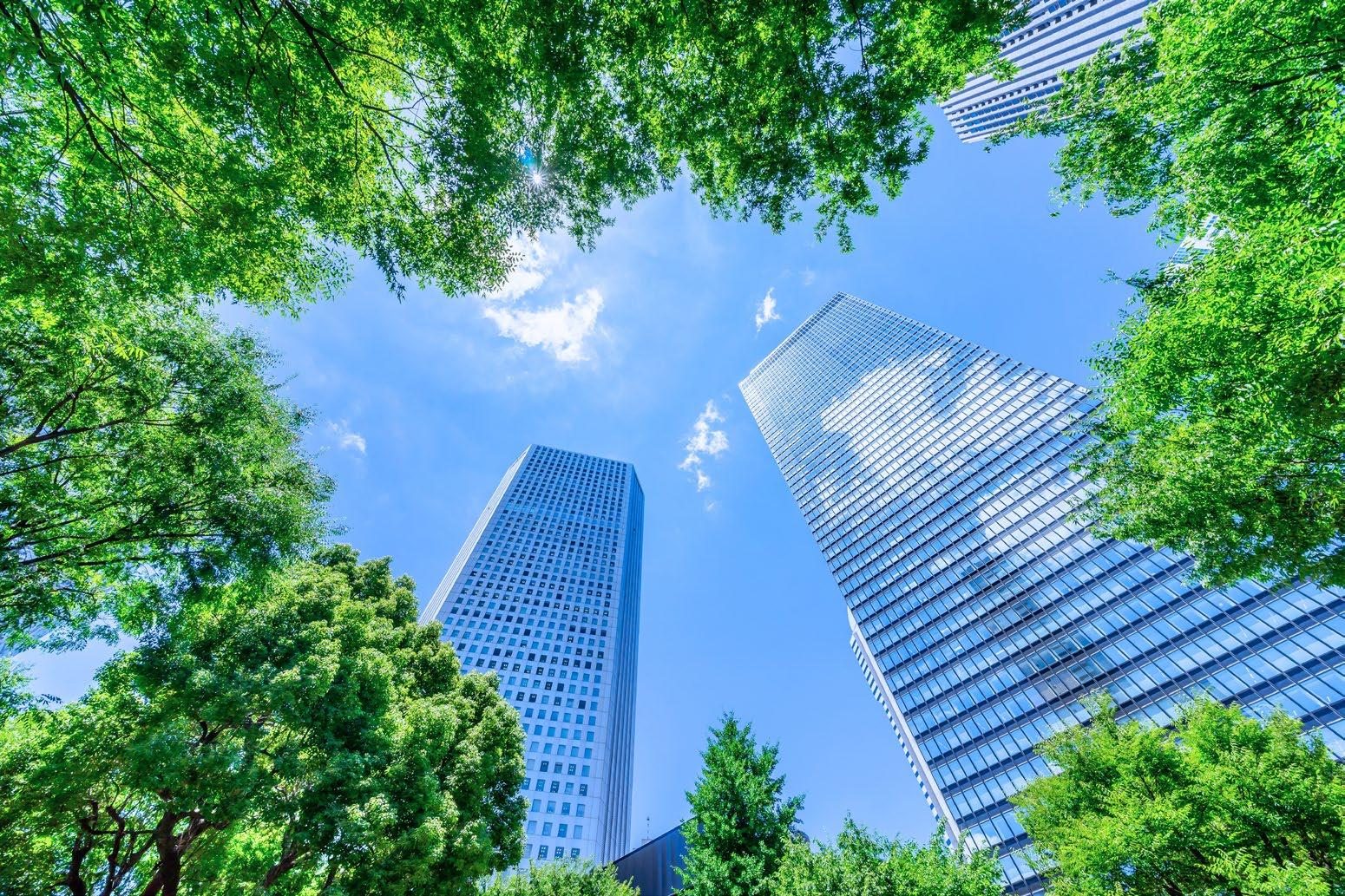





WITH THEIR VAST EXPERIENCE IN DEVELOPING AND OPERATING DISTRICT COOLING PROJECTS IN MALAYSIA, KJTS GROUP BERHAD IS ALL SET TO EXPAND IN THE ASEAN REGION BY PROVIDING A WIDE RANGE OF ENERGY SERVICES UNDER THE ENERGY- AS-A-SERVICE MODEL.

 By APUEA Secretariat
By APUEA Secretariat
KJTS Group represented by:
 ADRIAN LIM HOCK HENG, CHIEF OPERATION OFFICER (PROJECTS), KJTS GROUP BHD
ADRIAN LIM HOCK HENG, CHIEF OPERATION OFFICER (PROJECTS), KJTS GROUP BHD
 CHIN HONG TAN (CH), LEAD, REGIONAL COOLING ENERGY MANAGEMENT, KJTS GROUP BHD
CHIN HONG TAN (CH), LEAD, REGIONAL COOLING ENERGY MANAGEMENT, KJTS GROUP BHD
KJTS Group is a member of APUEA and has its headquarters in Kuala Lumpur. Since the 1990s, they have been pioneering the development of District Cooling Systems in Malaysia. With their vast experience in developing and operating District Cooling projects in Malaysia, KJTS Group is all set to expand in the ASEAN region by providing a wide range of energy services under the energy-as-a-service model. We recently had a conversation with Adrian Lim Hock Heng, who is the Chief Operating Officer (Projects), and Chin Hong Tan (CH), who is the Lead, Regional Cooling Energy Management at KJTS Group, to learn more about their long experience in District Cooling and their international expansion plans.

Can you make an introduction to KJTS Group?
CH: KJTS Group has been in business for 40 years, with headquarters in Malaysia and we focus on energy efficiency, especially for cooling and district cooling systems. Our team combines all available resources and skills to improve energy efficiency and reduce greenhouse gases for all our clients. In a nutshell, KJTS Group provides integrated building support services on a regional scale.
Can you describe the business scope(s) of KJTS Group, including main activities and goals?
Adrian: Our business scope is primarily divided into three main pillars: the cooling energy solution section, the facilities management section, and the cleaning services section. As far as goals are concerned, we aim to disrupt the industry by offering high-quality services while maintaining our commitment to sustainability. With a proven track record, we strive to increase efficiency and decrease energy usage, carbon emissions
and of course, lowering the cost of production.
CH: When discussing cooling systems, we focus on two big scopes. The first would be for greenfield projects for new developments or buildings, where we provide district cooling systems with the EPCC or the BOOT model. Secondly, we offer energy retrofit of buildings with a lot of potential to improve energy efficiency. In this case, we first conduct an in-depth energy audit and then give an energy retrofit proposal with a guarantee of long-term savings for the customer. For both types of projects, we can offer a zero CAPEX model; in other words, extend the Energy as a service (EAAS) model, meaning the customer doesn’t need to cover any CAPEX. This is essentially a winwin for all.
Adrian: We operate from Malaysia, where our headquarters is located. In addition, we also have offices in Singapore and Thailand. At the same time, we are looking to expand our reach further within the region. So, we are constantly scouting
for opportunities especially in other Southeast Asian markets, and we are very confident that our services will benefit many industries, including hospitality, education, health, manufacturing, commercial sectors so on and so forth.
Can you explain the concept of “Energy as a Service” and what benefits it brings to customers?
CH: Energy as a Service (EAAS) is basically like being a power producer who invests, builds, and manages the plant and then supplies all customers electricity at a fixed tariff. We provide cooling energy as a form of service to all our customers. We can design, construct, commission, and eventually operate the plant and supply chilled water to all customers at a fixed tariff.
Adrian: EAAS can also include renewable energy, and we are open to collaborating with partners in the renewable energy sector. With the current push from policymakers, especially in Malaysia, on energy efficiency and sustainability, we are opening our doors to take advantage of the current collaborative potential in
the market. Ultimately, we are able to customize to cater to our customer’s specific needs. We’re fundamentally a one-stop solution center for energy efficiency and sustainability. Since we started our relationship with APUEA a few years ago, the term EAAS was almost unheard of. But in the last year, everyone, and by that I meant our industry peers have been using this term and offering similar model. We take this as a very strong and positive testament that this model indeed works.
As a result, it gives comfort and assurance especially to the end users and owners that this is certainly the best way moving forward. We have gone from offering short-term solutions for our customers to building a long-term business relationship with our clients, where we provide a performance guarantee throughout our service duration, and one of the best attributes we are proud to share is that everything is done in-house. By being in control, we ensure excellent work quality throughout the whole Engineering, Procurement, Construction, Commissioning (EPCC) and Operation and Maintenance (O&M) stages. We always aim to operate the plant at its best and optimal level. An efficient system results in big cost savings and ultimately increases profits. One of the other benefits is that we invest in the capital expenditure of up to 100 percent. It is not our primary aim to be an investor, but by doing so, we give the customer or the end users the extra confidence by mitigating most if not all of the risks. We are basically putting our money where our mouth is.
Is it easier to sell a new technical solution to customers with the concept of Energy as a Service, and as an energy provider?
Adrian: Yes, because typically, if you talk about district cooling systems as an example, they are large-scale projects, which means large expenditure, sometimes equating to higher risk to the end users. By offering Energy as a Service, we mitigate almost all the risks from the customer, as they are all borne by the service provider. When we have this guarantee in place, it puts the customer at ease to embark on this business relationship with us, which helps us to promote and implement the
systems the way it should be. This is vital as the customer does not necessarily know what these solutions are and what benefits they can bring.
We have been in the market for 40 years, and with our know-how, experience and expertise, we are in a position to advise the customer from a different perspective. One example is, for largescale mixed developments, district cooling systems are flexible and scalable. In many instances, constructing the DCS to a 100% capacity right from the start may not be the best of idea as the take up of the cooling energy may be gradual. We want to scale the provision of energy to be as close as possible to the demand trend and at the same time guaranteeing the supply of cooling energy as and when it is required. Furthermore, it is very convenient to integrate more advance tech such as IoT and AI into a DCS for continuous improvements.
Can you explain how the Energy as a Service (EAAS) concept differs from an Energy Savings Performance Contract (ESPC)?
Adrian: In summary, both EAAS and ESPC aim to improve efficiency and reduce costs. The fundamental difference is that EAAS provides a broader range of services and shifts the ownership and operational risks to the service provider. ESPC, on the other hand, focuses more on energy improvements, with costs covered by future savings, and the risks associated with achieving these savings lie with the service provider.
With EAAS, clients don’t usually make any upfront investment(s) in energy assets. So, it functions like a subscription model, and the services may include energy supply, infrastructure upgrade, energy management, operation and maintenance services, etc. This model offers a high degree of customization to meet the client’s requirements from using high tech such as IoT, energy storage systems, etc. The service provider usually owns and operates the energy assets, and with that, they take the risk and responsibility for the performance outcome. The client will then pay for this service based on its energy usage over a contract period.
With ESPC, the service provider (usually an ESCO) will identify and implement energy-saving measures. The ESCO will
guarantee that the improvements will generate enough savings to finance the project over the contractual period. If this is not met, the ESCO shall bear the losses. The upfront investment is usually borne by the ESCO and recouped through the energy savings over a long-term service contract.
KJTS Group just announced the signing of a new Energy as a Service project at the Centara Grand Hotel in Bangkok. Can you tell us more about this project?
Adrian: The contract includes retrofitting the existing HVAC system at the Centara Grand Hotel at Central World, Bangkok. Work commenced on 1 Feb 2024 and is expected to be completed by 30 Nov 2024 or sooner. Upon completing the retrofit works, the O&M contract shall presumably begin on 1 Dec 2024 up to 30 Nov 2039 i.e. 15 years. At the end of the agreement period, all assets shall be transferred back to Centara. With Centara Grand Hotel being part of the Central Group, we hope this will open more building support services opportunities both domestically and internationally for our esteemed client and strengthen the KJTS Group’s position in the Thai market.
Can you describe the benefits of District Cooling Systems and how it can play a vital role in the energy transition between Malaysia and SEA?
CH: District Cooling Systems are leveraging on the economy of scale. Imagine in a township that comprises of a few different types of buildings like a shopping center, hotel, hospital and a transportation hub. Suppose these buildings have their own expensive chiller plant adapted to each building’s load profile. Now, imagine these load profiles combined and the buildings supplied by a single district cooling plant. This way, the peak capacity can be reduced by up to 30 to 40 percent, and the building owners can significantly decrease its mechanical and electrical requirements. This also enables them to save development costs. Another interesting aspect of District Cooling S ystems is that the larger the systems become, the more efficient they are. We also can apply thermal energy storage systems, which can help reduce
energy costs even more.
Adrian: As mentioned, district cooling system is very scalable to cater to the cooling demand, especially in response to the rapidly growing urban development in countries like Malaysia, Thailand, Singapore, and Southeast Asia. District cooling systems shrink the required equipment’s footprint, which is especially beneficial in urban areas where space is premium and expensive. In terms of net zero, I’m sure district cooling systems definitely have a smaller carbon footprint and can incorporate well with other renewable energy initiatives. It also helps reduce noise pollution.
Today, Malaysia is the leader of District Cooling in SEA, with more than 30 projects in operation. Can you explain why?
Adrian: We were fortunate and had a good head start back in 1995 when the largest global energy management company came and taught us how to design and build very efficient district cooling systems. In 1997, we successfully delivered the first district cooling plant in Malaysia. Given the apparent benefits of these systems, many clients from both the government and private sectors have adopted district cooling systems in Malaysia. We at KJTS Group take pride to have been directly involved in more than 70 percent of Malaysia’s district
WE PROVIDE COOLING ENERGY AS A FORM OF SERVICE TO ALL OUR CUSTOMERS. WE CAN DESIGN, CONSTRUCT, COMMISSION, AND EVENTUALLY OPERATE THE PLANT AND SUPPLY CHILLED WATER TO ALL CUSTOMERS AT A FIXED TARIFF.
cooling projects, either in designing and construction, or in operation and maintenance, or both. Another key reason is that there was a big push from the policymakers and government sectors which own and operate universities and hospitals. And when one site has been proven to be successful, others want to replicate this proof of concept. Evidently, this gave district cooling a very solid foundation in the country.
How do you see the potential for District Cooling developments in Malaysia and your focus area?
CH: Malaysia has a big potential; the energy price is still considered one of the region’s lowest, so it will only get pricier in the future. Malaysia also has a lot of mixed developments, and we have been approached by project owners asking us to propose a district cooling system for them. So, district cooling is already a proven model in Malaysia and the cooling demand is high as it is a country with a year-round summer.
Adrian: Thailand has a very big tech market, and from our perspective, there’s a lot of potential, but first, we need to make an effort and educate the market on our services and offerings. In Thailand, Energy as a Service is relatively unheard of, but the potential is very high, especially for brownfield projects. And, of course, the more project references we have, the easier it will be. In Malaysia, the government has put a lot of emphasis on sustainability and the importance of energy efficiency.
Significant budgets have been allocated for the rollout of feasibility studies to ensure a proper follow-through towards execution. District cooling is positioned very comfortably and aligns well with these energy improvement intentions. Recently, there’s been a surge in construction of data centers in the northern, central and the southern region of Malaysia. Without a doubt, district cooling is the best option for providing sustainable cooling to these developments. We also see many industrial parks where district cooling fits in very well. We are also continuously focused on other segments like hospitality, healthcare, and education sectors. Overall, especially after the pandemic, we are most optimistic that the market will be very bullish and we wish to be in the forefront and taking it by its horns.

Can you mention some of the barriers hindering district cooling development and how these barriers can be removed?
Adrian: Despite having the region’s highest number of operational District Cooling Systems, we recognize that the industry still lacks proper understanding of the systems’ potential and benefits. One reason is probably due to historical failures. However, in most cases, the actual basis for these failures is not known in detail. For example, some could be due to unfeasibility or the lack of proper operation and maintenance. To counter this, a continuous effort to educate is needed, and I think one of the best ways is to use the Energy as a Service model where performance guarantees are in place, and if CAPEX is an issue, we can invest in it up to a 100 percent.
By doing so, we alleviate the client’s risk and assure them that this model works. Another barrier would potentially be the lack of governance. In my opinion, it is a step forward for the supply of cooling energy to be regulated. Regulation should reduce cases of failures and the negative impact it will have on the market. Therefore, it makes sense for district cooling developers and service providers to engage other stakeholders, especially policymakers, to encourage the implementation of a framework
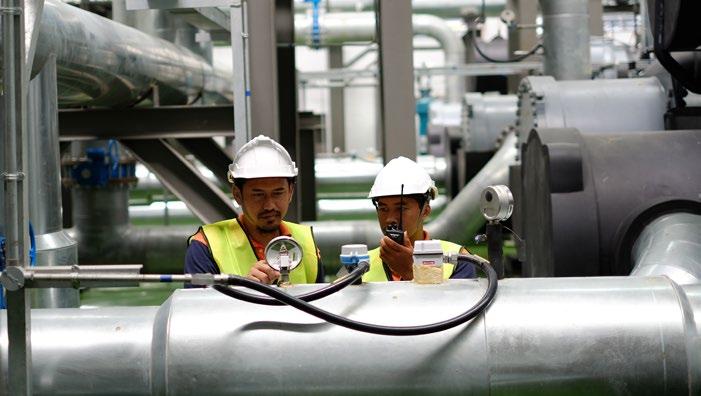
to regulate the supply of chilled water or cooling energy, especially for big-scale projects like district cooling systems. When regulated, I believe that the interests of all parties will be safeguarded fairly. This should help break down barriers and help push the implementation of district cooling in Malaysia as well as other countries in the region.
Do you have any other recommendations on activities that can help speed up the development of district cooling in Malaysia and the Southeast Asian region?
Adrian: I think what APUEA has been doing so far to create awareness has been excellent through conferences, seminars, and workshops. It’s vital to get participation from the relevant stakeholders as conferences have a very good reach.
Regional collaboration is important as we can learn from each other and share knowledge, best practices, and technologies. Through policymakers, it is possible to introduce things like incentives, tax rebates, subsidies, and building codes to help promote the implementation of district cooling systems.
Updated policies will give the general public even more confidence about district cooling, its benefits and its potential. To summarize, I am most optimistic that through our collective efforts, we can achieve a meaningful impact in terms of providing a very sustainable future through the efficiency of district cooling systems.
ONE OF THE OTHER BENEFITS IS THAT WE INVEST IN THE CAPITAL EXPENDITURE OF UP TO 100 PERCENT. IT IS NOT OUR PRIMARY AIM TO BE AN INVESTOR, BUT BY DOING SO, WE GIVE THE CUSTOMER OR THE END USERS THE EXTRA CONFIDENCE BY MITIGATING MOST IF NOT ALL OF THE RISKS.
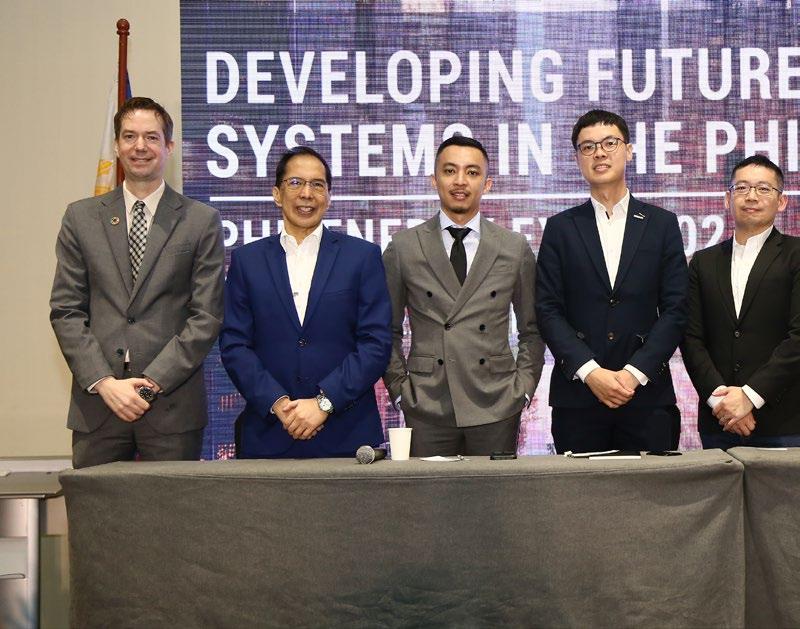




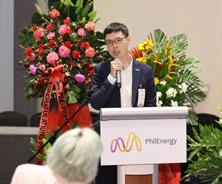
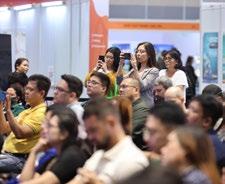
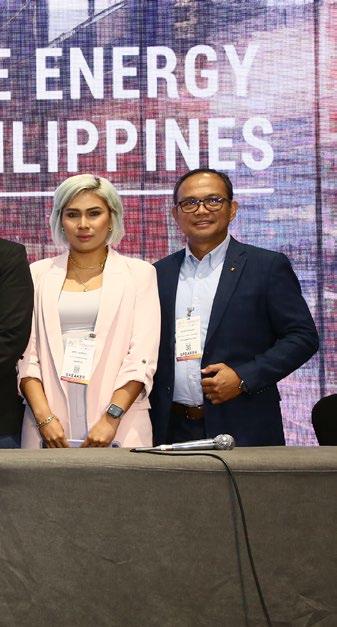




The Philippines faces several energy challenges that must be addressed in the upcoming decade. One example is to replace the natural gas source that is powering one-third of Luzon, the country’s largest island and home to 110 million people (almost 60% of the nation’s population), which is expected to run out by 2027. An increasing reliance on imported fossil fuels to power the country will result in higher electricity prices, which are already among the highest in Asia. The island nation is also threatened by extreme weather caused by climate change, including rising sea levels, droughts and more intense typhoons. To address these challenges, the country has increased its Renewable Energy ambitions and aims to increase the share of Renewable Energy in the power system to 30% in 2030 and 50% in 2040.
The good news is that Renewable Energy Resources in the Philippines are vast. According to IRENA, the country has 210 GW of Renewable Energy Resources available, which is 7.5 times more than the installed power capacity. There is no doubt that the Philippines has a lot of Renewable Energy potential, and the question is how these resources can be developed and integrated into the country’s energy systems.
This seminar, held on 21 March during the PhilEnergy Expo in Manila, included presentations and discussions on how to develop Future Energy Systems in the Philippines to help the country reduce its reliance on fossil fuels and support its energy transition.
We want to thank our speakers for contributing with great presentations and discussion of how the Energy Transition in the Philippines can be supported:
- Apryl Herrera, Local Business Manager, ABB Motion, Philippines
- Kevin Lamela, Head of Business Development, ENGIE Philippines
- Isaac Ng Wai Keong, Head, Business Development, Keppel Energy-as-a-Service (EaaS)
- Buddy Bocarile, Asst. Vice President and Head of Industrial Strategic Business Unit, Yokogawa Philippines, Inc.
- Adrian Lim Hock Heng, Chief Operation Officer (Projects), KJTS Group Bhd
- Alexander Ablaza, President, Philippine Energy Efficiency Alliance Inc. (PE2), CEO, Climargy and Co-chair, Asia-Pacific ESCO Industry Alliance
- Peter Lundberg, Executive Director, Asia Pacific Urban Energy Association (APUEA) (Moderator)
We also want to thank our co-host, Informa Markets in the Philippines, for creating this workshop with us.
ASIA URBAN ENERGY ASSEMBLY 2024
4-5 JULY 2024
Bangkok, Thailand
15-18 MAY
3-7 JUNE
3-5 JUNE
26-28 JUNE
INTERMATCH 2024
Bangkok, Thailand
15-18 MAY 2024
ASIA CLEAN ENERGY FORUM (ACEF)
Manila, Philippines
3-7 JUNE 2024
EUROHEAT & POWER CONGRESS 2024
Rotterdam, Netherlands
3-5 JUNE 2024
ENERTEC ASIA 2024
Kuala Lumpur, Malaysia
26-28 JUNE 2024
3-5 JULY
4-5 JULY
ASEAN SUSTAINABLE ENERGY WEEK
Bangkok, Thailand
3-5 JULY 2024
ASIA URBAN ENERGY ASSEMBLY 2024
Bangkok, Thailand
4-5 JULY 2024
28-31 AUGUST
4-6 SEPTEMBER
ELECTRIC & POWER INDONESIA
Jakarta, Indonesia
28-31 AUGUST 2024
HVACR VIETNAM / ELECTRIC & POWER
VIETNAM
Ho Chí Minh, Vietnam
4-6 SEPTEMBER 2024



• Asian Development Bank (ADB)
• International Energy Agency (IEA)
• United Nations Environment • Asian Infrastructure Investment Bank (AIIB) • REN21
• C40 Cities
ABB International District Energy Association (IDEA) Engie Euroheat & Power (EHP) Becis Qatar Cool Danish Board of District Heating (DBDH) Gradyent DEVCCO Thai ESCO Association Overseas Environmental Cooperation Center (OECC) Institute for Sustainable Energy Policies tabreed Chongqing Renewable Energy Society YOKOGAWA Kamstrup Bluebee Technologies Hydraulic analysis group NXITY IVL Swedish Environmental Research Institute Alliance for an Energy Efficient Economy (AEEE) Asia LEDS Partnership Black and Veatch KJTS Group China District Heating Association (CDHA) District Energy in Cities InitiativeMarketing
Postal
General
Specify:
